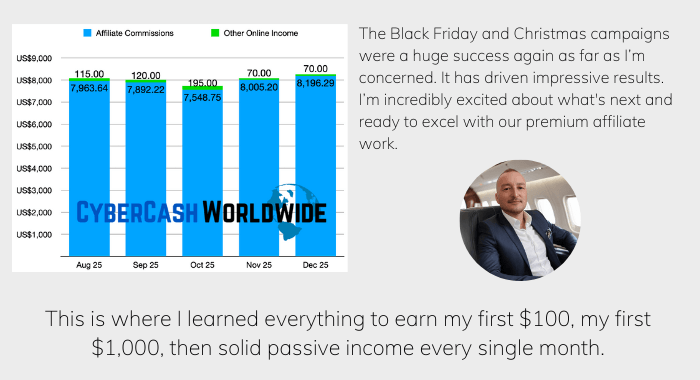Ever clicked on another blogger's post and thought, "How did they come up with this?" That's what you're going to find out - competitor content research. It's like a friendly sneak peek into what others are writing. Not to copy, but to get inspired and understand your place in the big blogging world.

Competitor Content Research Q&A 1~5
Questions:
- What is competitor content research?
- Why is analyzing competitor content important?
- How do I identify my main competitors for content research?
- What should I look for when analyzing competitor content?
- Can competitor content research improve my SEO strategies?
Answers:
Competitor content research involves analyzing the content strategy of your competitors to understand their strengths and weaknesses, and to identify opportunities for your own content.
Analyzing competitor content is important because it provides insights into what works in your industry, helps you understand market trends, and guides you in refining your content strategy to stand out.
To identify main competitors, look for businesses in your niche with a strong online presence, high search engine rankings, and engagement on their content that's similar or superior to yours.
When analyzing competitor content, look for topics they cover, content formats they use, the frequency of their posts, audience engagement, and any content gaps that you could fill.
Competitor content research can improve SEO strategies by revealing the keywords competitors rank for, the types of content that get traction in your industry, and backlink opportunities.
Did You Know?
- Use of Competitor Analysis: About 90% of companies perform some form of competitor analysis.
- Influence on Strategy: 70% of businesses adjust their content strategy based on competitor research.
- SEO Improvements: 60% of marketers use competitor content analysis for SEO strategy enhancement.
- Content Gap Identification: 80% of content marketers use competitor analysis to identify content gaps.
- Market Understanding: 75% of marketers believe competitor analysis is crucial for understanding market trends.
Why Check Out Other Blogs?
Why? Because you want to understand what's already out there, so you can shape your blog to stand out.
- Stay in the Know: Blogs change all the time. New trends pop up, and old ones fade. Keeping an eye on other blogs helps you stay updated.
- Find Your Gap: Maybe you've got unique insights or fresh takes that others haven't shared. By looking at other blogs, you can spot topics they've missed.
- Get Blogging Ideas: Stuck in a writing rut? Exploring other blogs can spark new post ideas for you!
- See What Works: Which posts get tons of comments or shares? They're doing something right. Take notes!
So how do we do it? Let's get started.
1. Tools and Techniques for Competitor Content Research
SEO Tools
SEMrush: A tool to see which keywords other blogs rank for.
Actionable Tip: Try the free version. Enter a competitor's URL and, within 5 minutes, you’ll see a list of top keywords they rank for.
Ahrefs: Discover who’s linking to competitor blogs and which keywords they're winning or losing on.
Actionable Tip: Use their 'Site Explorer'. Dedicate 10 minutes daily to uncover backlinks and keyword ranks of rival blogs.
Moz: Besides keyword insights, Moz offers a "Domain Authority" score, showing how well a website should rank on search engines.
Actionable Tip: Spend 10 minutes to check the Domain Authority of your top 3 competitors. Higher numbers (out of 100) mean they're more likely to rank well on Google.
Competitor Content Research Q&A 6~10
Questions:
- What tools can I use for competitor content analysis?
- How often should I conduct competitor content research?
- What is the best way to track and organize information from competitor research?
- How can I use competitor content research to identify content trends?
- Should I replicate successful content from my competitors?
Answers:
Tools for competitor content analysis include SEMrush for keyword and SEO analysis, BuzzSumo for content trends and engagement, Ahrefs for backlink and keyword research, and social media analytic tools.
Conduct competitor content research regularly, ideally quarterly, to stay updated with market trends and to adjust your strategy in a timely manner.
To track and organize information, use spreadsheets to compile data, and tools like Trello or Airtable for organizing insights and action plans derived from the research.
To identify content trends, analyze the most shared and engaged-with content of competitors, look for patterns in topics, formats, and audience responses over time.
Instead of replicating competitor content, use your research to inspire original content that addresses similar themes but adds unique value or a new perspective.
Social Media Monitoring Tools
BuzzSumo: This tool reveals which posts from other blogs are getting shared a lot on social media.
Actionable Tip: Pop in a topic. Within 3 minutes, you'll see the most-shared articles related to that subject.
Social Mention: Like a search engine for social media, it shows who's talking about what.
Actionable Tip: Enter your blog's name or topic. Spend 5 minutes seeing where and how often it gets mentioned on social platforms.
Did You Know?
- Resource Allocation: 50% of businesses reallocate resources based on insights from competitor content analysis.
- Tools Usage: 85% of digital marketers use tools like SEMrush and Ahrefs for competitor analysis.
- Social Media Insights: 65% of marketers use social media analytics for competitor content research.
- Increase in Engagement: Businesses that use competitor analysis report a 25% increase in content engagement.
- Influence on Product Development: 55% of companies use competitor content research to influence product development.
Manual Methods
Direct website visits: The good old-fashioned way – visiting a blog and seeing what’s new.
Actionable Tip: Bookmark top competitor blogs. Take a 15-minute break every day to browse through their recent posts.
Blog subscriptions: Get their latest posts directly in your inbox.
Actionable Tip: Sign up for email updates from 5 major competitors. It takes 2 minutes to subscribe, and you’ll stay updated with their content rhythm.
Email newsletters: Many blogs share exclusive content or insights in newsletters.
Actionable Tip: Sign up for newsletters of top blogs in your niche. Dedicate 10 minutes every weekend to skim through these emails for any fresh insights.
Benefits and Limitations
Benefits:
- Tools like SEMrush, Ahrefs, and Moz give speedy insights without you having to dig around too much.
- Social media tools show what's trending right now, giving you a pulse of current hot topics.
- Manual methods ensure you don't miss out on the human touch, and feeling the vibe of a blog.
Limitations:
- SEO tools can sometimes give an information overload.
- Social media insights are reactive; they show what's hot now, not necessarily what’ll be trending next.
- Manual methods are time-consuming and can be subjective.
2. Key Metrics to Consider

Content volume and frequency
Understanding how much and how often competitors post can offer insight into their strategy.
Tip: Spend 10 minutes at the beginning of the month. Visit top competitor sites and tally up the number of posts they made in the previous month. It can give you a benchmark for your content schedule.
Engagement metrics: Shares, comments, and likes
These metrics are quick indicators of what's resonating with readers.
Tip: Every two weeks, pick a post from your competitor, preferably one that's popular. Spend about 15 minutes assessing the number of shares, comments, and likes. Over time, you'll see patterns in what kind of content gets the most traction.
Keyword rankings and SEO performance
Where your competitors rank in search results can clue you into what they're doing right.
Tip: Once a month, use a tool like SEMrush or Ahrefs (they often have free trials). Plug in your competitor’s domain and see their top-ranking keywords. You'll spend about 20 minutes, but the insights can help steer your content strategy.
User behavior: Bounce rate, time on page, etc.
These stats tell you how readers interact with a page.
Tip: While direct stats from competitors might not be accessible, tools like SimilarWeb can give you a ballpark figure. Dedicate 15 minutes every two weeks to review these. If readers stay on a competitor's page for a long time, that content might be worth a look!
Competitor Content Research Q&A 11~15
Questions:
- How does competitor content research impact content marketing strategy?
- Can I analyze my competitor’s audience to improve my content?
- What role does social media play in competitor content research?
- How can I differentiate my content from competitors after research?
- Is it important to look at both direct and indirect competitors?
Answers:
Competitor content research impacts content marketing strategy by guiding topic selection, content format choices, publishing frequency, and by highlighting areas for improvement and differentiation.
Analyzing a competitor’s audience can provide insights into their preferences, pain points, and engagement behaviors, which can help tailor your content to better meet audience needs.
Social media plays a crucial role as it offers real-time insights into competitor engagement, audience feedback, trending topics, and the effectiveness of different content types and strategies.
Differentiate your content by offering unique insights, adopting a distinct brand voice, focusing on untapped niches, and creating more comprehensive or visually appealing content.
Looking at both direct and indirect competitors is important as it provides a broader view of the content landscape, revealing additional opportunities and threats outside your immediate niche.
3. How to Analyze Competitor Content
Recognizing content types and formats
Notice if competitors favor blog posts, videos, or maybe infographics.
Tip: Every month, take a 20-minute scroll through a competitor’s site. Note the variety of content. You might spot a format you haven't tried yet!
Understanding content depth and quality
Length doesn't always mean quality. However, deep dives on topics can be goldmines.
Tip: Once every two weeks, pick a lengthy competitor post. Spend 30 minutes reading. Does it offer value throughout? Is there fluff? This can help you improve your long-form content.
Observing the editorial voice and style
Getting the tone right is a big deal. Is a competitor more casual? More formal?
Tip: Dedicate 15 minutes a month to read a couple of competitor pieces back-to-back. This will give you a sense of their consistent tone and style.
Did You Know?
- Regular Analysis: 40% of businesses conduct competitor content analysis on a monthly basis.
- Brand Differentiation: 70% of marketers use competitor analysis to differentiate their brand in the market.
- Customer Retention: 30% of businesses have improved customer retention through insights gained from competitor analysis.
- Content Quality Improvement: 60% of marketers report improved content quality after conducting competitor analysis.
- Decision Making: 80% of executives say competitor analysis is critical for decision-making.
Analyzing audience feedback and comments
Reader feedback can be super revealing.
Tip: On a lazy weekend afternoon, grab a coffee and spend about 30 minutes diving into the comment section of a competitor's popular post. You might discover what readers love or feel is missing. Great intel for your future posts!

Competitor Content Research Q&A 16~20
Questions:
- How can I measure the success of my content strategy against competitors?
- Should I focus on competitor quantity or quality of content?
- How can I find my competitor's most successful content pieces?
- How does competitor content research help in creating a content calendar?
- What are the risks of relying too heavily on competitor content research?
Answers:
Measure the success by comparing metrics like website traffic, engagement rates, backlink profiles, social media shares, and search engine rankings against those of competitors.
Focus on the quality of content over quantity, as high-quality content drives more engagement and is more likely to rank higher in search engine results.
Find competitor's most successful content by using tools like BuzzSumo to see their most shared content or Google Analytics to observe their top-performing pages.
Competitor research helps in content calendaring by identifying the frequency of competitors’ posts, seasonal trends, and timeframes when certain content types perform best.
Risks of overreliance include the potential for echo chamber content, overlooking your unique brand voice and strengths, and the possibility of missing out on innovative content strategies.
4. Finding Gaps and Opportunities
Topics your competitors haven't covered yet
While going through competitor sites, you might notice some topics they've skipped.
Tip: Make a list while doing your regular competitor checks. Once a month, spend 20 minutes listing the topics you feel are missing on their site but would resonate with your readers.
Content formats they're missing
Maybe they're all about blogs, but where are the podcasts or videos?
Tip: Spend 30 minutes monthly, browsing platforms like YouTube, Spotify, or even Pinterest. Check if your competitors are active there. If they're absent in a format or platform, consider if it's right for your brand.
Audience queries not being addressed
Comments and forums are gold mines for understanding audience queries.
Tip: Twice a month, set aside 20 minutes to dive into comments on competitor sites or related forums. List down recurring questions or pain points you find. Your next content piece might just have the answers!
Fresh angles and perspectives on popular topics
Some topics are evergreen, but they don't have to be repetitive.
Tip: Choose a popular topic once a month and brainstorm for 15 minutes. Think about a fresh take or a new perspective that hasn't been discussed much.
5. Turning Research into Actionable Insights:

Prioritizing content opportunities based on potential impact
Now that you have a list of gaps and opportunities, decide which ones could be game-changers.
Tip: Every month, spend 25 minutes reviewing your list. Rank items based on what could drive the most engagement or fill a significant gap. The top 2-3 items? Those are your priorities.
Setting clear objectives for your content strategy
Don't just create content; have a clear purpose for each piece.
Tip: For every content piece you decide on, spend 10 minutes outlining what you want it to achieve. Do you want more shares, and comments, or perhaps drive traffic to a product page?
Did You Know?
- Budget Allocation: 45% of companies have changed their budget allocation based on competitor content insights.
- Keyword Strategy: 75% of SEO professionals use competitor analysis for keyword strategy.
- Backlink Strategy: 50% of businesses use competitor analysis to improve their backlink strategy.
- Content Format Diversification: 35% of content marketers diversify their content formats based on competitor analysis.
- Lead Generation Impact: 40% of marketers credit competitor analysis with improving their lead generation efforts.
Integrating learnings into your content calendar
Take your insights and plan out when you'll tackle each piece.
Tip: Dedicate an hour at the beginning of every quarter to slot in your content priorities into a calendar. This keeps you organized and on track. Use tools like Trello or Google Calendar to keep things visual.
Iteratively updating your approach based on results
Content strategy isn't static; it should change based on what's working.
Tip: At the end of every month, spend 30 minutes reviewing content performance. Are some pieces underperforming? Adjust your approach for similar future content. See a surprising win? You can replicate that success.
6. Ethical Considerations in Competitor Research
Avoiding direct copying or plagiarism
Competitor research isn't about replicating content; it’s about drawing insights. While it's tempting to reuse a great idea, always add your unique twist.
Tip: Use a tool like Copyscape or Grammarly's plagiarism checker. When you write content, run it through one of these (about 5 minutes per piece). It'll highlight any accidental similarities, ensuring your work remains unique.
Respecting intellectual property rights
Images, logos, and certain content are protected by law. Using these without permission can land you in hot water.
Tip: If you're unsure whether something is free to use, don't risk it. Instead, spend 10 minutes searching for royalty-free alternatives on platforms like Unsplash or Pexels.
The importance of originality and authenticity
Original content is not only ethically correct but is also what sets you apart. Readers can spot genuine content, and it builds trust.
Tip: Every time you sit to draft content, start by jotting down your unique insights or experiences about the topic. Spend the first 10 minutes of your writing process on this. This will set a genuine tone for the rest of your piece.

How To Do Competitor Content Research for Your Blog
The ongoing importance of competitor content research
Staying updated with competitor content isn't a one-time task. It helps keep your content relevant and can inspire innovative ideas.
Tip: Dedicate 30 minutes every week, maybe during a coffee break, to quickly browse through competitors' sites. Make it a habit, like checking your email.
Emphasizing the balance between gaining inspiration and maintaining originality
While competitors can be a great source of inspiration, there's a fine line between getting inspired and just copying. Always tilt towards adding your unique voice and perspective.
Tip: After researching, take a break. Maybe even a day. When you return to writing, you'll be less likely to subconsciously replicate and more likely to infuse your uniqueness.
Encouraging continuous learning and adaptation
The content landscape shifts often. What worked yesterday might not today. Thus, while competitor research is valuable, always be ready to pivot and adapt.
Tip: Once every quarter, take an afternoon to review your content strategy. Spend about 2 hours. What's working? What's not? Where can you improve? This regular check-in ensures you stay flexible and proactive.
Final Words
If you understand the ethical side of competitor research, you will certainly keep your content genuine and uphold your brand’s reputation. Regular competitor checks, balanced with authentic and adaptive strategies, set the foundation for content that resonates and engages. Stay curious, stay genuine, and here's to your continued success in content creation!

